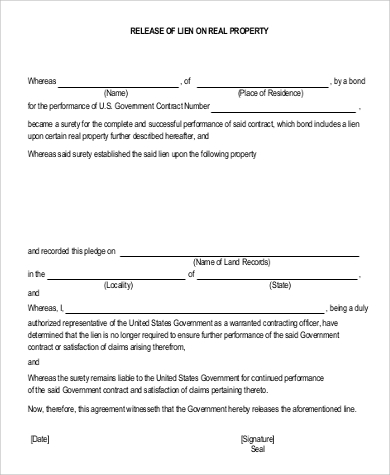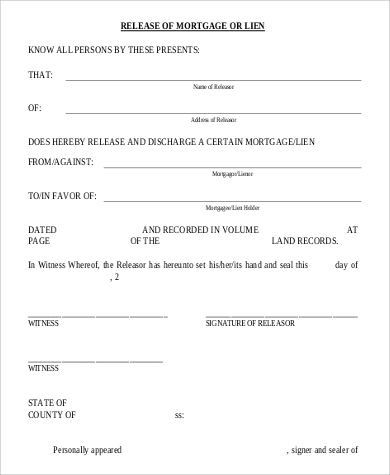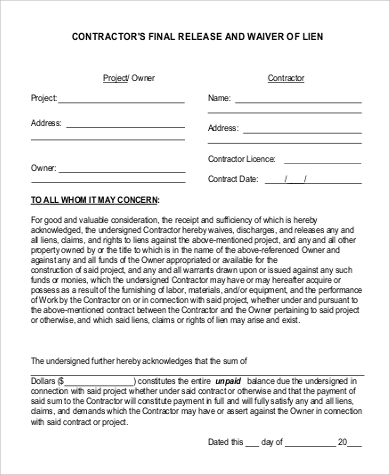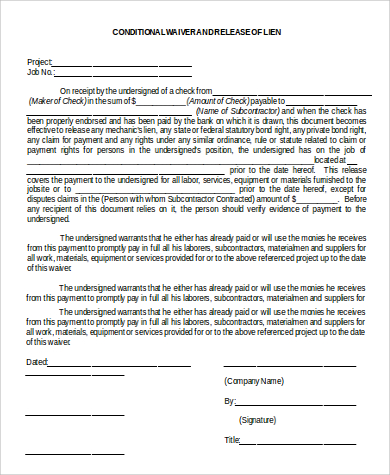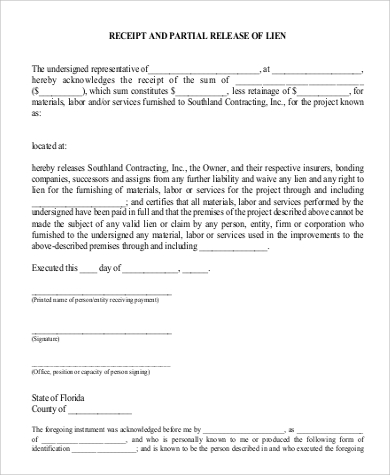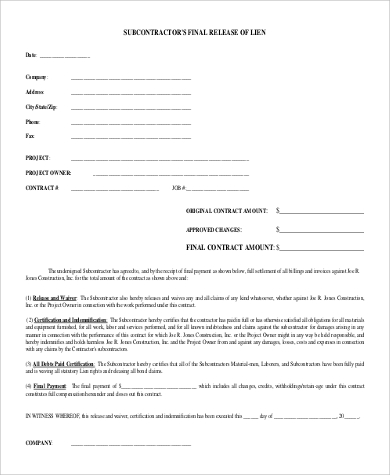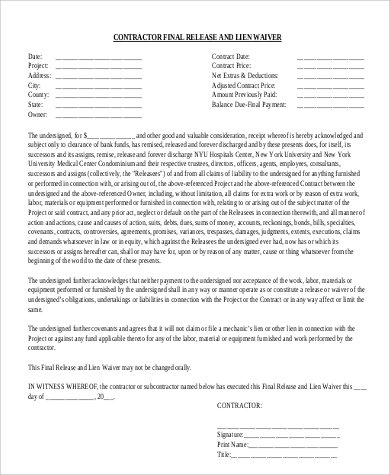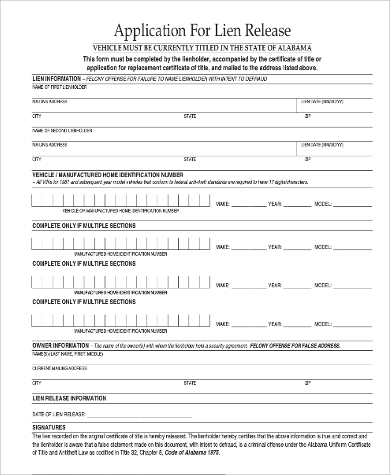What is a lien? A lien is a claim of someone on a property used by someone else. A property can be taken back if the debtor doesn’t make payments to the person who has the claims to the property. If you buy a car or a truck, a lien is placed against the value of the asset and is only discharged when they are paid off.
Once a loan is repaid in full, the collateral asset is returned to the borrower and the lien is dissolved. The Sample Forms that you will find on this page will help you with the documents needed to have your lien released. Our forms are available in PDF and word format.
Sample Release of Lien on Property Form
Prescribed Form for Release of Lien in PDF
Sample Release of Mortgage Lien Form
Free Release of Contractor Lien Form
Conditional Waiver and Release of Lien Form in Word
Types of Liens
There are several types of liens you might encounter, which all serve the same purpose: to be paid on a debt owed by securing a property against the debt. Click on the links to check our Lien Waiver Forms and Release of Lien Samples.
1. Consensual Liens – consensual liens are the most common type of lien, where both parties agree to the placement of the lien. These liens can be purchase-money liens, such as a first mortgage where the owner of the home agrees to the bank securing the home with a lien should the debt go unpaid.
2. Statutory or Non-Consensual Lien – are obtained by someone through a court procedure to put a claim on an asset for unpaid bills. There are 2 types of statutory liens:
- Tax liens – This type of statutory lien is placed against a property of someone by federal, state, or local governments for the non-payment of taxes.
- Contractor’s liens – In this case of statutory lien, if a contractor does work for a homeowner, but the homeowner doesn’t pay the contractor, the contractor can go to court to get a lien on the property. A homeowner cannot sell the property unless the contractor’s lien is paid off.
Release of Vehicle Lien Form Example
Receipt and Partial Release of Lien Form to Download
Printable Sub Contractor Release of Lien Form
Basic Final Release of Lien Waiver Form in PDF
Standard Application for Lien Release Form
3. Judgement Liens – This type of lien is common in small claims court cases. This type of lien happens when a court grants a creditor actual rights to the property owned by the debtor. The creditor can attach a lien on real property, seize bank accounts, and even garnish wages.
Importance of a Lien Waiver
These liens are designed to provide additional protection on contractors to ensure payment for the work provided and the materials supplied. While these laws exist to protect contractors, this also creates a risk for property owners and real estate developers of paying the materials used twice. A lien waiver is important to protect both the contractor or a homeowner, if in any case one party doesn’t pay the other party. Without a lien removed, a party cannot occupy the specific property until the debt is paid.
It is essential to sign a lien waiver on any construction project to protect yourself from huge costs in terms of delay and legal fees in the future. The samples you will find on this page will help you with the documents needed to have a lien removed from your property. If useful, you may also check our Sample Requisition Forms, which you can download and edit.
Related Posts
Agreement Form Samples & Templates
Vehicle Inspection Forms Samples & Templates
Sample Employee Advance Forms
Sample Child Travel Consent Forms
Sample Testimonial Request Forms
Sample Employee Details Forms
Sample Divorce Forms
Sample Attestation Forms
Employee Performance Appraisal Form Templates
FREE 9+ Sample Presentation Evaluation Forms in MS Word
FREE 10+ School Admission Form Samples & Templates in MS Word | PDF
FREE 30+ Patient Consent Form Samples in PDF | MS Word
FREE 10+ Sample Sign Off Form Templates in PDF | MS Word
FREE 11+ Sample Medical Consultation Forms in PDF | MS Word
FREE 8+ Sample Donation Forms in PDF | MS Word
